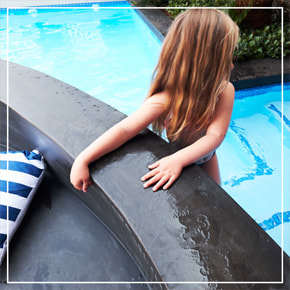Q: How is Cemcrete's PoolCrete priced?
A: Our PoolCrete prices vary depending on the colour.
Q: Is there a guarantee on your PoolCrete?
A: Workmanship guarantees are given by the applicators who apply the products for you. We at Cemcrete stand by the quality of our products, so should you feel that there is a product defect, we will investigate thoroughly.
Q: Can a pool plaster like PoolCrete be applied by a DIY enthusiast?
A: Cemcrete’s PoolCrete is not a DIY product; we will always recommend using an experienced contractor to do the application. You can contact your nearest Cemcrete branch for details of reputable contractors, or complete your project details on our contractors website.
Q: Why should I use PoolCrete instead of other pool plasters?
A: Cemcrete only makes use of top quality marble dust and the world’s best white cement. This ensures that our product will not change colour, as some products on the market do. Market research indicates that there are products on the market where the cement becomes yellow, blue and even grey in a short space of time. Cemcrete has manufactured PoolCrete since 1973 and have been at the forefront in solving the industry’s issues related to the chemical staining of pool plasters, due to our commitment and research within this market.
Q: What is the lifespan of PoolCrete?
A: PoolCrete, correctly applied, can last anything between 15 and 20 years. PoolCrete is by far the most durable pool finish in its range, however the secret to longevity is correct water balance and maintenance.
Q: Is it possible to apply the PoolCrete right up to the pool coping, in other words not use mosaic or tiles on this section?
A: You can apply PoolCrete to this area of the pool and leave it exposed to the elements, however it may land up with fine hairline cracks, and can be marked or stained by any products in the pool at the waterline (e.g. suntan lotions, natural body oils, dust, debris etc.)
Q: After installing PoolCrete, how should I maintain my pool?
A: It is important to follow the PoolCrete Start-up Guide when filling your newly finished pool, however your experienced contractor should guide you through the process. When maintaining your pool with chemicals, always follow the manufacturer’s instructions when adding them to your pool.
Q: Will PoolCrete give me a uniform colour?
A: All cement coatings take on a life of their own, and the final colour is determined by factors such as prevailing temperatures on the day of application, amount of water used in the mix, and workmanship. Cement provides a natural lightly mottled effect. This is not as noticeable in PoolCrete White as it is in other colours.
Q: What chemicals can I use in my PoolCrete pool?
A: The use of traditional chlorine, sodium bicarbonate, acid and stabilizers in your swimming pool are permitted. Other chemicals should be used in consultation with the relevant manufacturers and skilled pool practitioners. Avoid using chemicals that contain copper sulphate and herbicides.
There is a variety of other chemicals on the market and one should use them in consultation with the relevant manufacturer & skilled pool practitioners for their correct use. Special care should be taken when using copper sulphate & herbicide containing pool care products are possible staining can occur.
Q: Can I use a salt chlorinator in a pool plastered with PoolCrete?
A: Yes, but please remember that salt should only be added to newly marble plastered pools 30 days after filling the pool with water. Once this is done, check with your local pool shop what the recommended salt levels are for your size pool, as well as the correct method for adding salt to your pool.
Q: After applying PoolCrete when can the automatic pool cleaner be introduced into the pool?
A: Only after 21 days after the swimming pool had been filled.
Q: Can I use borehole water?
A: Borehole water is generally rich in calcium carbonate and may have metals present. This may result in early forms of calcium scaling and surface staining. It is recommended that municipal water is used to fill the pool.



